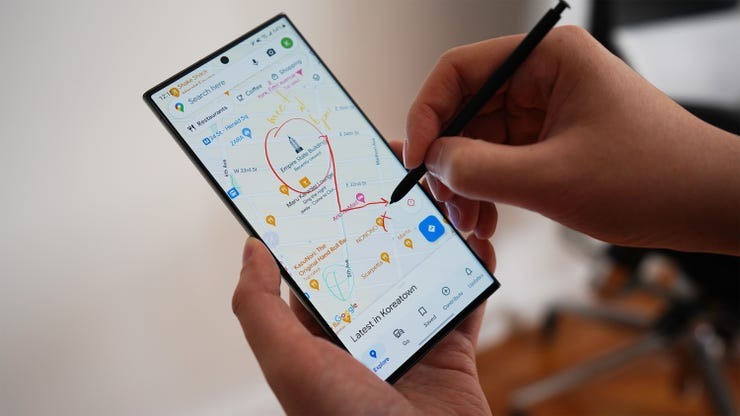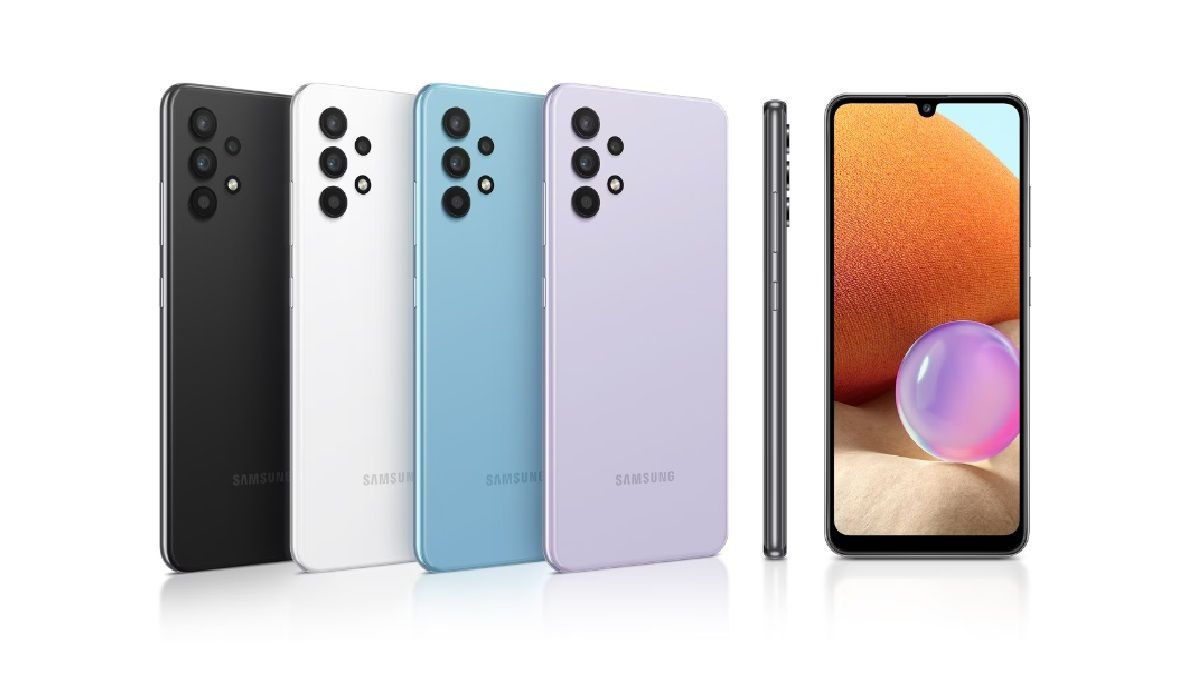Introduction
Samsung smartphones offer a wide range of features designed to enhance the user experience. Here are some key features commonly found in Samsung smartphones:
- Display: Samsung is known for its high-quality displays. They often incorporate Super AMOLED or Dynamic AMOLED technology, providing vibrant colors, deep blacks, and excellent contrast ratios. Additionally, Samsung has been introducing curved displays in some of its flagship models, offering a more immersive viewing experience.
- Camera: Samsung smartphones typically come with advanced camera systems. They often feature multiple rear cameras, including wide-angle, ultra-wide-angle, telephoto, and depth-sensing lenses. This allows users to capture a variety of shots, from panoramic landscapes to detailed close-ups. Samsung also incorporates advanced software processing and AI features to enhance image quality and provide additional shooting modes and effects.
- Performance: Samsung smartphones are equipped with powerful processors and ample RAM, providing smooth multitasking and fast app loading times. The company uses its own Exynos or Qualcomm Snapdragon processors (depending on the region), which are capable of handling demanding tasks and running resource-intensive applications and games.
- Software: Samsung smartphones typically run on Android OS, customized with Samsung’s own user interface called One UI. One UI offers a clean and intuitive interface, along with various customization options. Samsung regularly provides software updates to improve performance, add new features, and enhance security.
Display:

The display is one of the standout features of Samsung smartphones. Here are some aspects to consider when exploring the display capabilities:
- Display Technology: Samsung utilizes Super AMOLED and Dynamic AMOLED technology in its smartphones. These display technologies offer vibrant colors, deep blacks, and excellent contrast ratios. AMOLED displays provide individual pixel illumination, resulting in better energy efficiency and deeper blacks compared to LCD screens.
- Resolution and Pixel Density: Samsung smartphones often feature high-resolution displays. The resolution is measured in pixels and indicates the number of pixels on the screen. Higher resolutions result in sharper and more detailed visuals. Samsung flagship models typically have QHD+ (1440 x 3200 pixels) or even 4K (2160 x 3840 pixels) resolutions. Additionally, pixel density, measured in pixels per inch (PPI), determines the level of detail and sharpness. Samsung devices often have high PPI values, ensuring crisp visuals.
- Display Size: Samsung offers a variety of display sizes to cater to different user preferences. From compact models with smaller displays to larger devices with expansive screens, there’s a wide range of options available. Display sizes typically range from around 5.5 inches to over 6.9 inches diagonally.
- Curved Displays: Samsung has introduced curved displays in some of its flagship models. These displays have a slight curve on the edges, creating a more immersive and bezel-less viewing experience. Curved displays offer a unique aesthetic appeal and can enhance the sense of depth and immersion while consuming media.
When exploring Samsung smartphones, it’s important to consider these display features to find a device that suits your preferences for resolution, size, curvature, and overall visual experience.
Camera:
The camera capabilities of Samsung smartphones are highly regarded, and the company often incorporates advanced camera systems and features. Here are some aspects to consider when exploring the camera of Samsung smartphones:
- Multiple Rear Cameras: Samsung smartphones typically feature multiple rear cameras that work together to offer a versatile photography experience. Common camera setups include a primary wide-angle lens, an ultra-wide-angle lens for capturing wider scenes, a telephoto lens for optical zoom or portrait shots, and a depth-sensing lens for creating bokeh or background blur effects.
- Megapixel Count and Sensor Quality: Samsung smartphones come with varying megapixel counts for their cameras. Higher megapixel counts generally result in more detailed and sharper images. Additionally, the quality of the camera sensor plays a significant role in image quality, low-light performance, and dynamic range.
- Camera Software Features: Samsung smartphones incorporate advanced camera software to enhance the photography experience. These features may include:
- Night Mode: Enables capturing well-exposed and detailed photos in low-light conditions by using software algorithms to reduce noise and enhance brightness.
- Portrait Mode: Creates a depth-of-field effect, blurring the background and keeping the subject in sharp focus for professional-looking portraits.
- Pro Mode: Allows manual control over settings such as ISO, shutter speed, white balance, and exposure, giving users more control over the image capture process.
- Scene Optimization: Uses artificial intelligence to automatically detect scenes and adjust camera settings to optimize image quality for specific scenarios like landscapes, food, or pets.
- Super Slow Motion: Enables capturing ultra-slow-motion videos at high frame rates, often up to 960 frames per second, to create dramatic and captivating slow-motion clips.
- Panorama: Allows capturing wide-angle panoramic shots by panning the camera across the scene.
- AR Emoji and Fun Filters: Provides fun and creative options to apply augmented reality effects, emojis, and filters to photos and videos.
- Video Recording Capabilities: Samsung smartphones offer advanced video recording capabilities, including:
- 4K Recording: Allows capturing high-resolution videos at 4K (2160p) resolution, resulting in detailed and sharp footage.
- Stabilization: Some Samsung devices feature optical image stabilization (OIS) or electronic image stabilization (EIS) to reduce camera shake and produce smoother videos.
- Super Steady Mode: Utilizes software and hardware stabilization to produce steady and shake-free videos, even in situations with a lot of movement or action.
- Slow Motion and Time-lapse: Offers the ability to record slow-motion videos and time-lapse videos, allowing users to capture unique and creative footage.
When exploring Samsung smartphones, consider the megapixel count, camera software features, video recording capabilities, and low-light performance to find a device that meets your photography and videography needs.
Performance

The performance of Samsung smartphones is a key factor in providing a smooth and responsive user experience. Here are some aspects to consider when exploring the performance of Samsung smartphones:
- Processor: Samsung smartphones typically use their in-house Exynos processors or Qualcomm Snapdragon processors (depending on the region). These processors are designed to provide fast and efficient performance for running applications, multitasking, and handling demanding tasks.
- CPU and GPU: The central processing unit (CPU) and graphics processing unit (GPU) are essential components of a smartphone’s performance. Samsung smartphones feature powerful CPUs and GPUs that handle intensive tasks like gaming, video editing, and graphics-intensive applications smoothly.
- RAM: The amount of random-access memory (RAM) in a smartphone determines how many applications can run simultaneously without experiencing slowdowns. Samsung devices offer various RAM configurations, typically ranging from 4GB to 12GB or more in high-end models, ensuring smooth multitasking and fast app-switching.
- Storage: Samsung smartphones come with different storage options, including 32GB, 64GB, 128GB, 256GB, and even higher capacities in some models. Additionally, Samsung devices often utilize fast flash storage technologies like Universal Flash Storage (UFS) to provide quicker read and write speeds, resulting in faster app loading times and smoother data transfers.
When considering the performance of Samsung smartphones, it’s important to assess factors like processor, RAM, storage capacity, gaming capabilities, software optimization, and software update frequency. By considering these aspects, you can choose a Samsung smartphone that offers the level of performance you desire for your daily usage and specific requirements.
Software:
Samsung smartphones run on the Android operating system, customized with Samsung’s own user interface called One UI. Here are some aspects to consider when exploring the software features of Samsung smartphones:
- Android OS Version: Samsung smartphones run on the Android operating system, which is developed by Google. It’s important to consider the version of Android installed on the device, as newer versions often introduce new features, performance improvements, and security enhancements.
- One UI: Samsung’s One UI is a customized user interface that sits on top of Android. One UI is designed to provide a clean and intuitive user experience, with features optimized for ease of use on larger screens. It offers a range of customization options, including themes, icon packs, and various settings to personalize the device to your liking.
- Multitasking and Productivity: Samsung smartphones offer features to enhance multitasking and productivity. This includes features like split-screen mode, where you can run two apps side by side, and a pop-up view, allowing certain apps to float on top of others. Some models also include a desktop-like experience called DeX, enabling you to connect your device to a monitor and use it with a keyboard and mouse for a PC-like experience.
- Bixby: Samsung’s virtual assistant, Bixby, is integrated into the software. Bixby can perform tasks based on voice commands, control certain device functions, and provide personalized recommendations. It also has a dedicated button on some Samsung smartphones for quick access.
- Samsung Apps and Services: Samsung smartphones come preloaded with a variety of apps and services. This includes Samsung’s own apps such as Samsung Pay (for contactless payments), Samsung Health (for fitness and health tracking), and Samsung Notes (for taking handwritten notes). Samsung’s app ecosystem provides additional functionality and integration with other Samsung devices and services.
When exploring Samsung smartphones, consider the version of Android, the features and customization options provided by One UI, the availability of software updates, and the range of Samsung apps and services. These aspects contribute to the overall user experience and determine the software capabilities of Samsung smartphones.

Conclusion:
In conclusion, Samsung smartphones offer a wide range of features that contribute to a rich and satisfying user experience. From stunning displays and advanced camera systems to powerful performance and a customizable software interface, Samsung strives to provide devices that cater to various needs and preferences.
The display technology employed by Samsung, such as Super AMOLED and Dynamic AMOLED, ensures vibrant colors, deep blacks, and excellent contrast ratios. This, combined with high resolutions and pixel densities, results in sharp and detailed visuals.
Samsung smartphones’ camera capabilities are highly regarded, featuring multiple rear cameras with various functionalities, advanced software features, and impressive video recording capabilities. Whether you’re capturing stunning photos or recording high-quality videos, Samsung devices offer a versatile and enjoyable photography experience.



